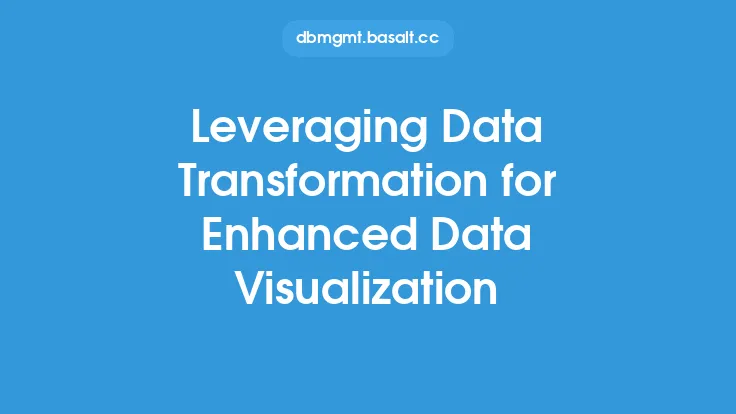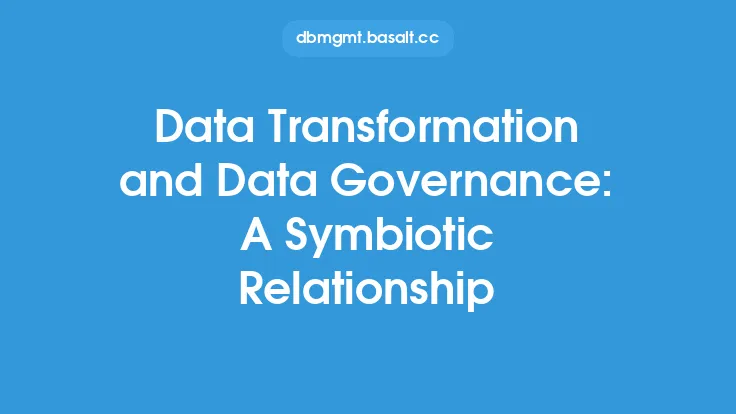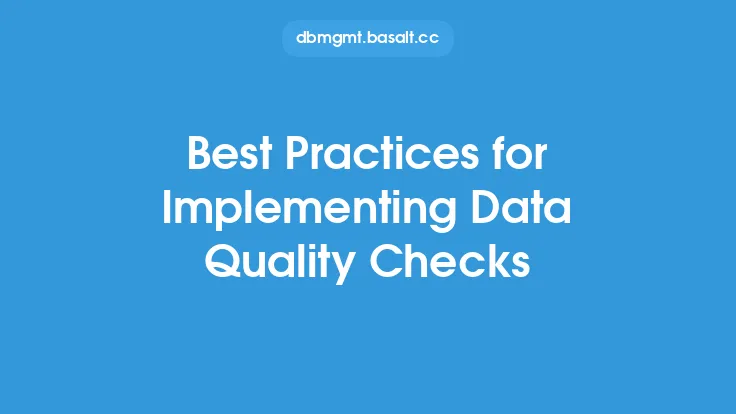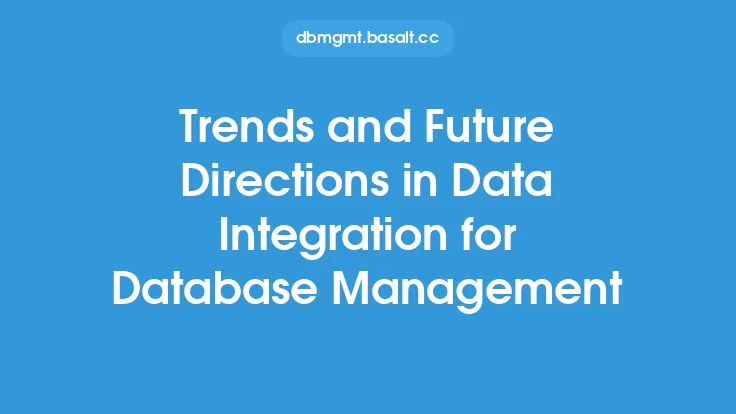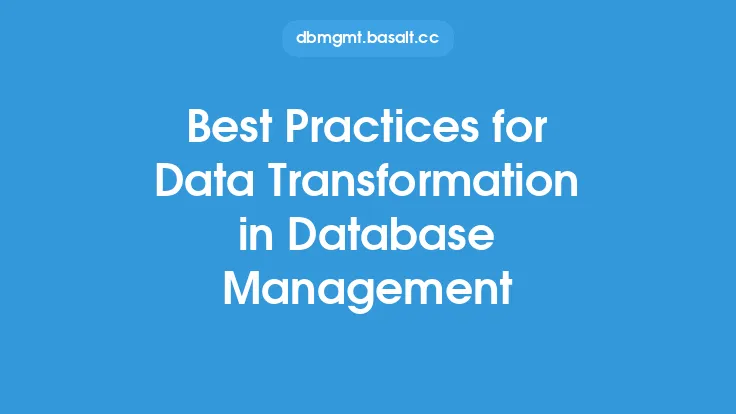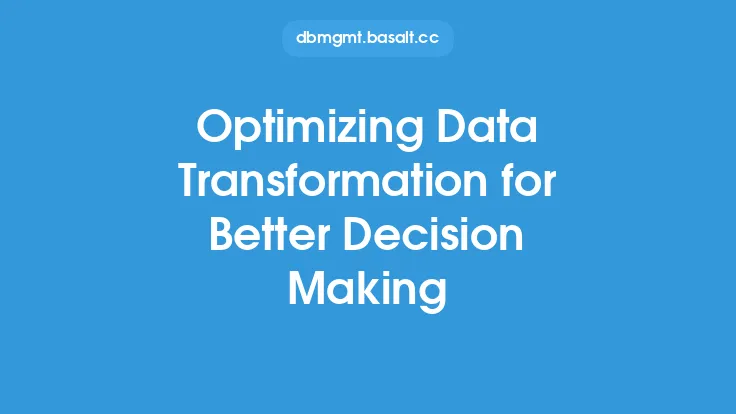Data transformation is a crucial step in the data processing pipeline, enabling organizations to convert raw data into a format that is suitable for analysis, reporting, and decision-making. However, data transformation processes can be complex, time-consuming, and prone to errors, which can hinder the efficiency of the entire data pipeline. Streamlining data transformation processes is essential to increase efficiency, reduce costs, and improve the overall quality of the data.
Introduction to Data Transformation
Data transformation involves a series of steps that convert raw data into a standardized format, making it easier to analyze and interpret. This process includes data cleaning, data mapping, data aggregation, and data formatting, among others. The goal of data transformation is to create a unified view of the data, which can be used to support business decisions, improve operations, and enhance customer experiences. However, data transformation processes can be challenging, especially when dealing with large volumes of data from diverse sources.
Challenges in Data Transformation
One of the significant challenges in data transformation is handling data from different sources, each with its own format, structure, and quality. This can lead to data inconsistencies, errors, and discrepancies, which can affect the accuracy and reliability of the transformed data. Additionally, data transformation processes can be manual, time-consuming, and labor-intensive, requiring significant resources and expertise. Furthermore, data transformation processes can be prone to errors, which can propagate downstream and affect the quality of the analysis, reporting, and decision-making.
Streamlining Data Transformation Processes
To streamline data transformation processes, organizations can adopt several strategies. First, they can implement automated data transformation tools and technologies, such as data integration platforms, data transformation software, and data quality tools. These tools can help automate the data transformation process, reduce manual errors, and improve the efficiency of the data pipeline. Second, organizations can establish standardized data transformation processes and protocols, which can help ensure consistency, accuracy, and reliability of the transformed data. Third, they can invest in data governance and data quality initiatives, which can help improve the overall quality of the data and reduce errors.
Data Transformation Tools and Technologies
There are several data transformation tools and technologies available, each with its own strengths and weaknesses. Some popular data transformation tools include data integration platforms, such as Informatica, Talend, and Microsoft SQL Server Integration Services (SSIS). These platforms provide a comprehensive set of tools and features for data transformation, data integration, and data quality. Other data transformation tools include data transformation software, such as Altova, Stylus Studio, and Oxygen XML Editor, which provide advanced features for data mapping, data conversion, and data formatting.
Best Practices for Streamlining Data Transformation
To streamline data transformation processes, organizations should follow several best practices. First, they should establish clear data transformation requirements and specifications, which can help ensure that the transformed data meets the needs of the business. Second, they should implement automated data transformation tools and technologies, which can help reduce manual errors and improve the efficiency of the data pipeline. Third, they should establish standardized data transformation processes and protocols, which can help ensure consistency, accuracy, and reliability of the transformed data. Fourth, they should invest in data governance and data quality initiatives, which can help improve the overall quality of the data and reduce errors.
Data Transformation and Data Quality
Data transformation and data quality are closely related, as the quality of the transformed data depends on the quality of the raw data. To ensure high-quality transformed data, organizations should invest in data quality initiatives, such as data profiling, data validation, and data cleansing. These initiatives can help identify and correct errors, inconsistencies, and discrepancies in the raw data, which can affect the quality of the transformed data. Additionally, organizations should establish data quality metrics and benchmarks, which can help measure the quality of the transformed data and identify areas for improvement.
Conclusion
Streamlining data transformation processes is essential to increase efficiency, reduce costs, and improve the overall quality of the data. By implementing automated data transformation tools and technologies, establishing standardized data transformation processes and protocols, and investing in data governance and data quality initiatives, organizations can improve the accuracy, reliability, and consistency of the transformed data. Additionally, by following best practices for data transformation and data quality, organizations can ensure that the transformed data meets the needs of the business and supports informed decision-making. By streamlining data transformation processes, organizations can unlock the full potential of their data and drive business success.
